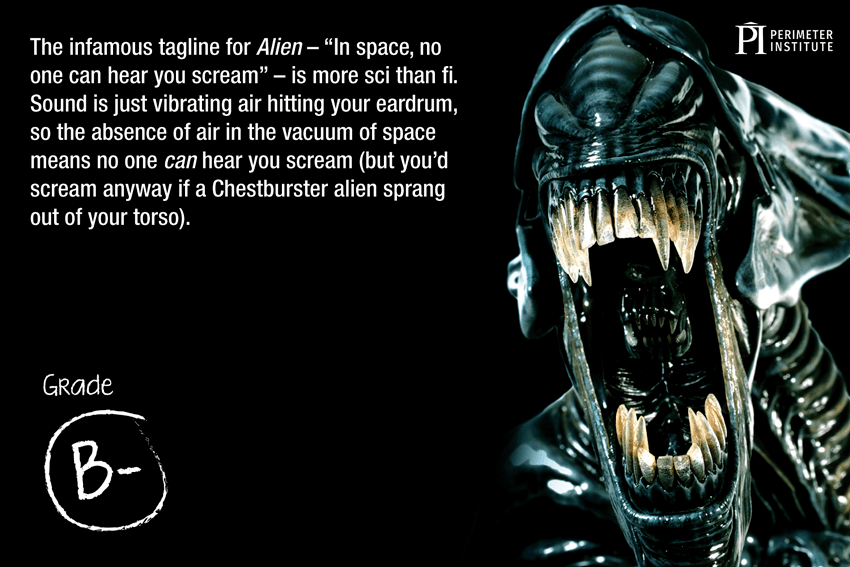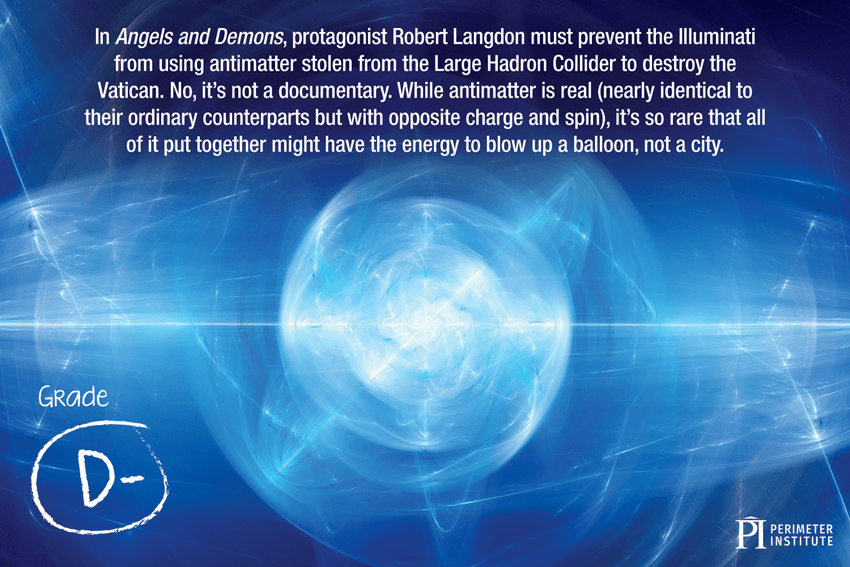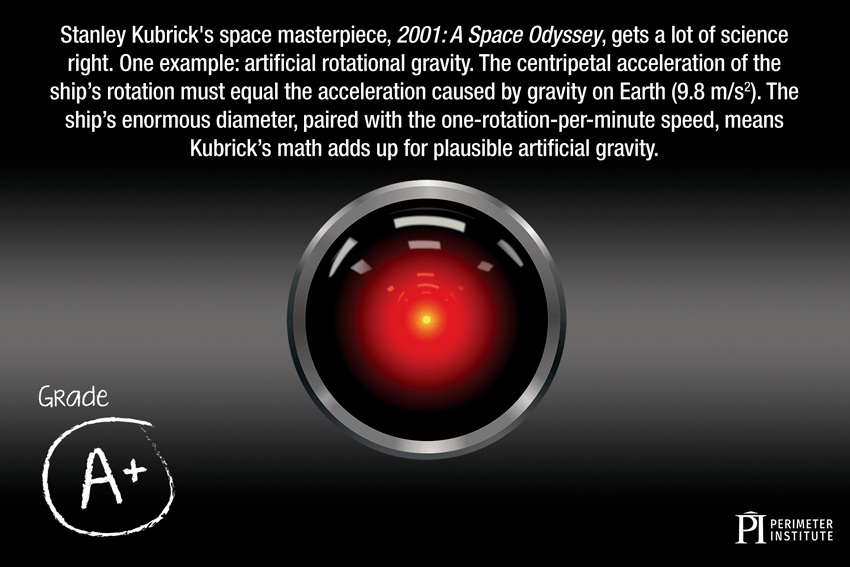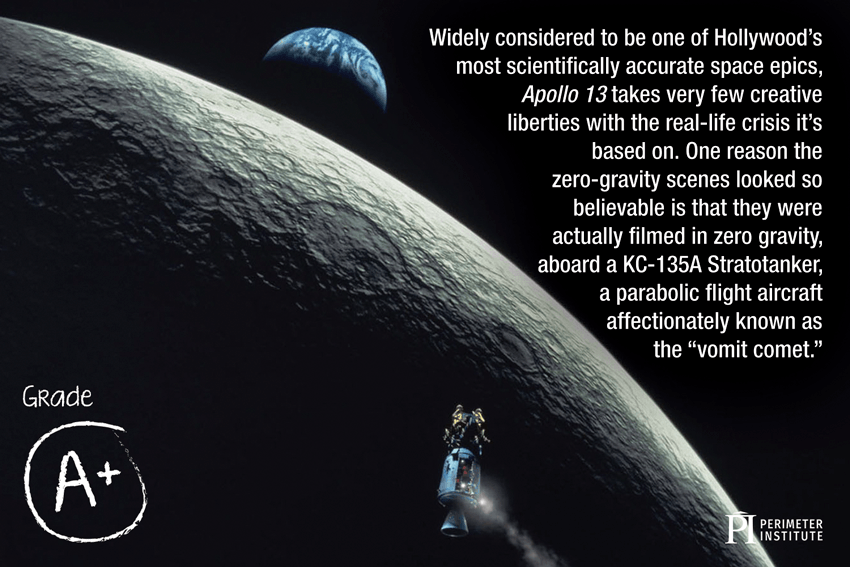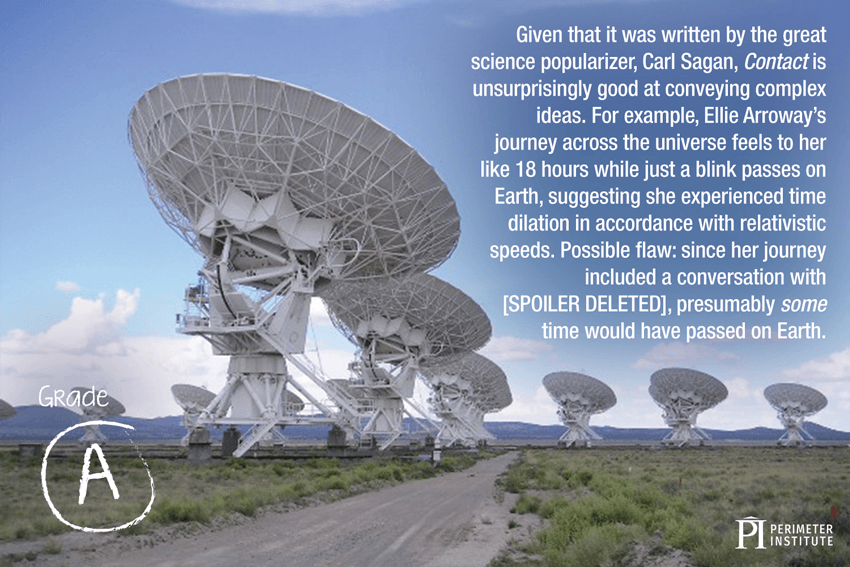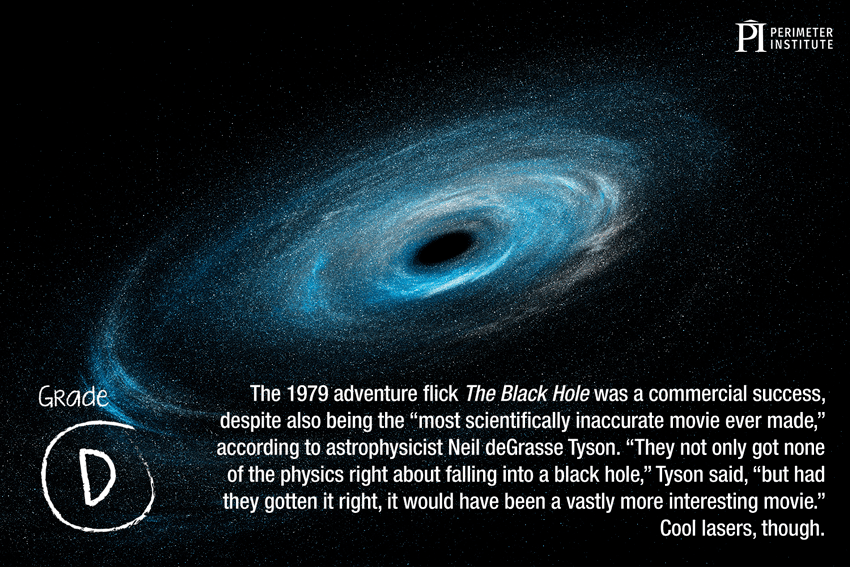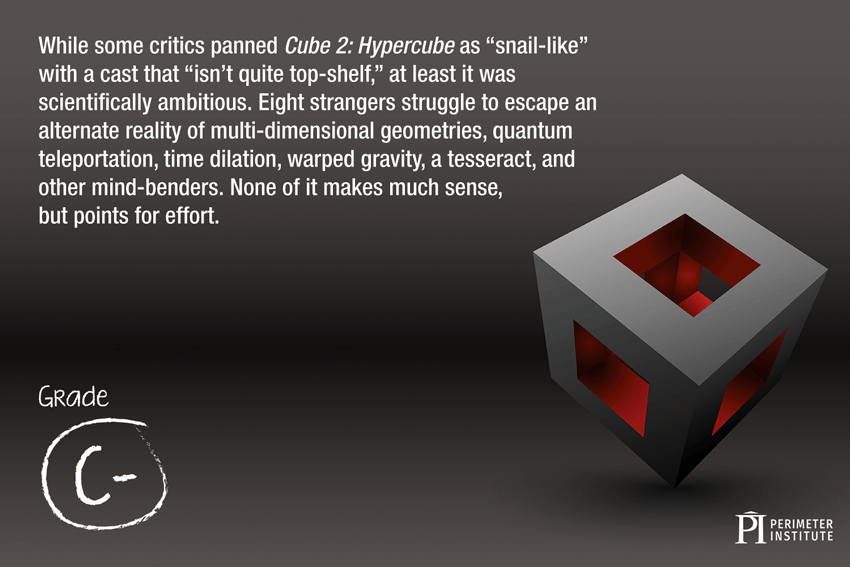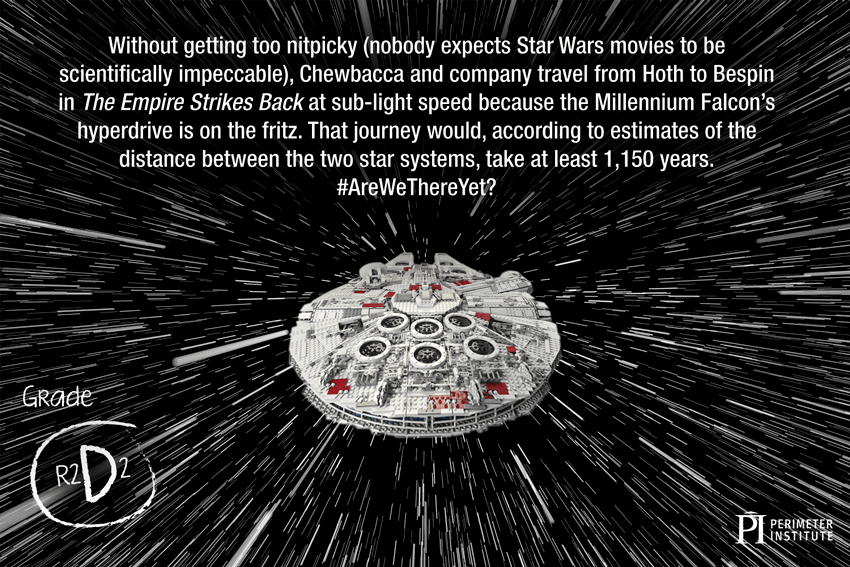Time travel. Warp speed. Epic space battles in galaxies far, far away. If you can dream it, Hollywood can turn it into an escapist big-screen experience.
Sometimes filmmakers base plotlines and special effects on well-established science. Sometimes they're even prescient, anticipating or inspiring later scientific and technological advances (remember when a videophone was the stuff of Jetsons-like fantasy?).
Other times, filmmakers take a bit (or a lot) of creative license with science, resulting in scenes or entire films that are considerably more "fi" than "sci." We focused a scientific lens on some of our favourite films (and some duds) and graded them for accuracy.
What did we miss? Comment below, or tweet your favourite movie-science wins and fails to @Perimeter.
Watch a great MinutePhysics video explaining time dilation and the so-called twins paradox.
HowStuffWorks has a great explanation of how Faraday cages work.
Further exploration
About PI
Perimeter Institute is the world’s largest research hub devoted to theoretical physics. The independent Institute was founded in 1999 to foster breakthroughs in the fundamental understanding of our universe, from the smallest particles to the entire cosmos. Research at Perimeter is motivated by the understanding that fundamental science advances human knowledge and catalyzes innovation, and that today’s theoretical physics is tomorrow’s technology. Located in the Region of Waterloo, the not-for-profit Institute is a unique public-private endeavour, including the Governments of Ontario and Canada, that enables cutting-edge research, trains the next generation of scientific pioneers, and shares the power of physics through award-winning educational outreach and public engagement.
You might be interested in



